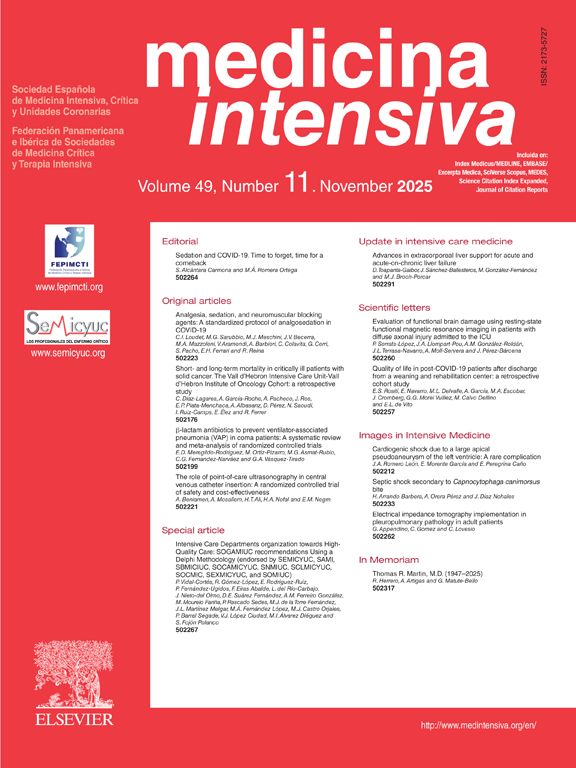To assess Southern European Intensive care unit nurses’ knowledge about evidencebased guidelines for the prevention of ventilator-associated pneumonia and to compare these findings with a pan-European perspective.
DesignA sub-analysis from an observational study performed using a 9-questions, multiplechoice questionnaire performed during the period October 2006 - March 2007.
SettingSix Southern European countries, selected from 22 participant European countries.
ParticipantsVolunteer nurses from intensive care units.
Results3329 questionnaires were obtained, 1182 of them belonging to Southern European countries with a 75.8% response rate. Global average score was 45,1%, being it significantly better in the South of Europe (46,6%, P<.001). A linear multiple regression analysis showed that years of working experience (per class of increase) (B=0.154±(SD) 0.045) (95% CI (0.066–0–242)) (p=0.001) and working in a smaller intensive care unit (B=−0,210±(SD) 0.059) ((95% CI) −0.326. −0.094) (p<0.001) was independently associated with better test scores.
ConclusionsSouthern European critical care nurses’ knowledge about ventilator-associated pneumonia prevention is poor, but significantly better than in the pan-European countries.
Determinar el grado de conocimiento de las enfermeras de cuidados intensivos del sur de Europa de las guías de prevención de la neumonía asociada a ventilación mecánica y compararlo con los resultados globales de Europa.
DiseñoSubanálisis de un estudio observacional realizado mediante un cuestionario de nueve preguntas con respuesta cerrada llevado a cabo entre octubre de 2006 y marzo de 2007.
ÁmbitoSeis países del sur de Europa, de los 22 países europeos participantes.
ParticipantesEnfermeras voluntarias de cuidados intensivos.
ResultadosSe recibieron 3.329 cuestionarios, de los cuales 1.182 fueron del sur de Europa donde hubo una tasa de respuesta del 75,8%. La puntuación media global fue de 45,1% y la del sur de Europa 46,6% donde fue significativamente mejor (p<0,001). El análisis de regresión lineal mostró que los años de experiencia (por aumento de categoría) están independientemente relacionados con mejores puntuaciones (B=0,154 ± (ES) 0,045) (95% IC (0,066-0,242)) (p=0,001) y trabajar en una unidad de cuidados intensivos con menor número de camas está independientemente relacionado con mejores puntuaciones (B=−0,210 ± (ES) 0,059) ((95% IC) −0,326–−0,094) (p<0,001).
ConclusionesEl conocimiento de las enfermeras de las unidades de cuidados intensivos de los países del sur de Europa sobre las guías de prevención de la neumonía asociada a ventilación mecánica es bajo aunque mejor que en la muestra global de Europa.




